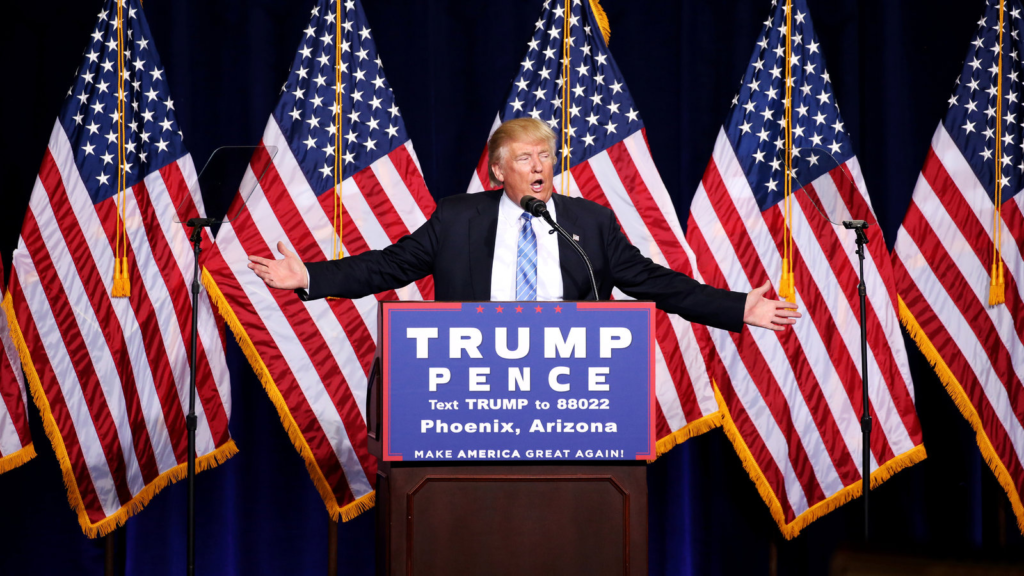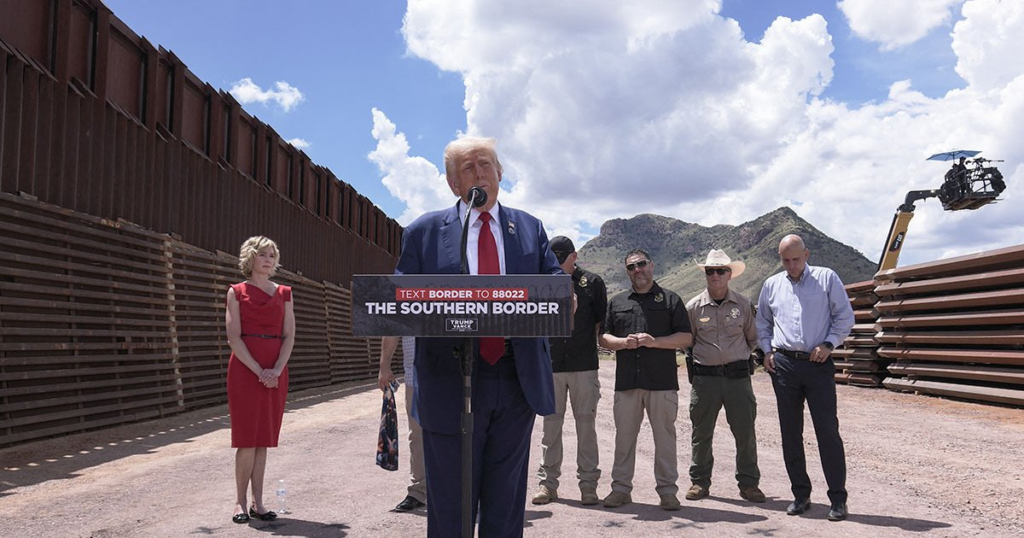Immigration has always been at the heart of America’s identity, shaping its culture, workforce, and future. Under the Trump administration, a series of sweeping visa reforms marked one of the most dramatic shifts in U.S. immigration policy in decades. By increasing application fees, restricting fee waivers, and altering rules for students and skilled workers, these reforms touched nearly every aspect of international mobility into the United States.
For some, these measures were a long-overdue effort to protect American jobs and ensure fairness in the system. For others, they represented unnecessary barriers that risked closing the doors of opportunity to hardworking students and professionals. At the center of the debate lies a question that resonates deeply with families, businesses, and communities: what does it mean for America to be a land of opportunity in the twenty-first century?
The Trump Administration’s Approach to Immigration
From the beginning, the Trump administration made immigration reform a central pillar of its agenda. The emphasis was clear—reduce pathways for those deemed “abusing the system,” prioritize American workers, and shift the balance of power away from immigrants toward domestic labor.
While much attention was focused on high-profile issues like border security and travel bans, another significant aspect of the administration’s policy was the tightening of visa procedures. These changes often came through regulatory adjustments rather than legislation, making them less visible but equally impactful. The reforms included higher fees for visa applications, the elimination of long-standing waivers, and additional scrutiny for students and workers seeking entry.

Rising Costs of Immigration
One of the most notable changes was the sharp increase in visa application fees. For decades, visa costs remained relatively stable, intended mainly to cover administrative expenses. Under Trump, however, the logic shifted. Application fees for certain visa categories, including the H-1B program for skilled workers and student visas, were raised dramatically.
For families and individuals, these rising costs were more than an inconvenience. They became a deciding factor in whether to pursue opportunities in the United States. A graduate student from Nigeria who once dreamed of studying in Boston explained that the combination of higher fees and additional living costs made the plan unattainable. Similarly, small businesses that once relied on H-1B workers found themselves priced out of the program, unable to compete with larger corporations that could absorb the higher expenses.
Critics argued that the rising fees were designed to discourage applications, functioning less as a regulatory tool and more as a barrier. Supporters countered that the changes ensured only serious applicants applied, limiting misuse of the system and offsetting taxpayer burdens.
The End of Fee Waivers
Equally significant was the decision to end many fee waivers previously available to low-income applicants. Fee waivers had served as a safety net, ensuring that financial hardship did not prevent qualified individuals from applying for visas, green cards, or citizenship.
By removing these waivers, the Trump administration created a system where wealth became an unspoken prerequisite for opportunity. For students from developing nations, for refugees, and for families struggling financially, the end of waivers meant dreams were deferred or abandoned altogether.
The stories of those affected highlight the human impact. A Syrian refugee family, already navigating trauma and uncertainty, faced the devastating realization that their path to safety in the United States was blocked by costs they could not pay. An aspiring student from South America who earned a scholarship to a U.S. university was forced to decline, unable to cover the additional visa expenses without the waiver. These narratives reveal how policy decisions ripple outward, shaping real lives in profound ways.
Impact on International Students
The United States has long been the top destination for international students, drawn by its world-class universities, research opportunities, and vibrant culture. Trump’s visa reforms, however, created new obstacles that altered this landscape.
Higher fees combined with stricter visa rules meant that fewer students applied to American institutions. Many turned instead to Canada, the United Kingdom, or Australia, where immigration policies were more welcoming. The decline in international enrollment left universities—particularly smaller colleges that rely heavily on tuition from foreign students—struggling financially.
Beyond finances, the cultural impact was significant. International students have long enriched American classrooms with diverse perspectives and ideas. By discouraging their presence, the reforms risked narrowing the horizons of American education, depriving students of the chance to learn alongside peers from around the globe.
The Tech Industry’s Struggle
Perhaps no sector felt the impact of Trump’s visa reforms more acutely than the technology industry. Companies from Silicon Valley giants to small start-ups depend heavily on foreign talent, often filling specialized roles that domestic workers cannot. The combination of higher fees and stricter scrutiny under Trump created hurdles that slowed hiring and innovation.
Executives warned that these policies risked driving talent to other countries. Canada, in particular, saw a surge in tech workers and companies eager to relocate, lured by friendlier immigration policies. For the United States, this represented not only a loss of talent but also a weakening of its competitive edge in industries critical to the future.
Human Stories of Struggle and Hope
Behind the headlines and statistics are the people most affected by these reforms. A software engineer from India, who had dreamed of contributing to cutting-edge projects in California, described how the new fees forced him to withdraw his application. A young woman from Kenya who had secured a place in a prestigious medical program shared the heartbreak of watching her opportunity slip away due to costs she could not cover.
Yet, amid these struggles, there were also stories of resilience. Families pooled resources, communities fundraised, and students persevered despite the barriers. These narratives underscore the human determination that continues to define the immigrant spirit—even in the face of daunting obstacles.
The Debate Over American Workers
A central justification for Trump’s reforms was the protection of American workers. The administration argued that by limiting foreign labor and raising costs, U.S. citizens would have better access to jobs and opportunities.
However, many economists and business leaders challenged this view. Studies showed that immigrant workers often complement rather than compete with American workers, filling specialized roles and creating new opportunities through innovation. In fact, many of the world’s most successful companies—founded or co-founded by immigrants—have become engines of job creation for millions of Americans.
The debate highlights a tension at the heart of immigration policy: how to balance the needs of domestic workers with the benefits of global talent. Trump’s reforms leaned heavily toward restriction, but critics argue that this approach risked undermining the very economy it sought to protect.
Shifting Perceptions of America
Beyond the economic and legal impacts, Trump’s visa reforms influenced how America was perceived around the world. Once seen as a beacon of opportunity, the United States began to appear less welcoming, especially to young professionals and students seeking a future abroad.
Surveys showed a decline in the number of international students considering American universities, with many citing restrictive policies as a deterrent. For businesses, the perception that the U.S. was closing its doors made it harder to recruit top global talent. These shifts had long-term implications, potentially diminishing America’s role as a global leader in education, science, and technology.

Broader Implications for Immigration Policy
The reforms under Trump also set a precedent for how future administrations might approach immigration. By raising fees and eliminating waivers, the administration demonstrated the power of regulatory changes to reshape the system without congressional approval.
This approach raised questions about fairness, accountability, and the role of executive authority in immigration policy. Critics worried that it set a dangerous precedent, allowing future administrations to impose barriers based not on legislation but on administrative decisions. Supporters argued that such flexibility was necessary to address misuse and adapt to changing circumstances.
Possible Paths Forward
As the United States looks beyond the Trump era, the question remains: what should the future of visa policy look like? Advocates for reform call for a system that balances fairness, accessibility, and the needs of the modern economy. They argue that fees should reflect actual administrative costs rather than serve as deterrents, and that pathways for students and skilled workers should remain open.
Others emphasize the importance of protecting American workers, calling for safeguards that prevent exploitation while ensuring opportunities for citizens. The challenge lies in finding a balance that honors both priorities, creating an immigration system that is fair, sustainable, and true to America’s values.
Conclusion
The visa reforms under Trump—marked by rising fees and the end of waivers—reshaped the landscape of immigration and international education in profound ways. They altered who could come to America, who could study here, and who could contribute to its industries. They sparked debates about fairness, economic growth, and the very meaning of opportunity.
At the heart of these reforms are human stories—students who dreamed of studying at American universities, families seeking a better future, workers eager to contribute their skills. Their experiences remind us that immigration policy is not just about numbers or laws but about lives, ambitions, and the values a nation chooses to uphold.
As America continues to define its role in a rapidly changing world, the legacy of these reforms offers both caution and inspiration. The challenge moving forward will be to build an immigration system that remains true to America’s promise—a place where hard work and talent, not wealth or privilege, open the doors to opportunity.
Do Follow USA Glory On Instagram
Read Next – Court Battle Over H-1B Visa Fees Could Reshape Skilled Immigration






